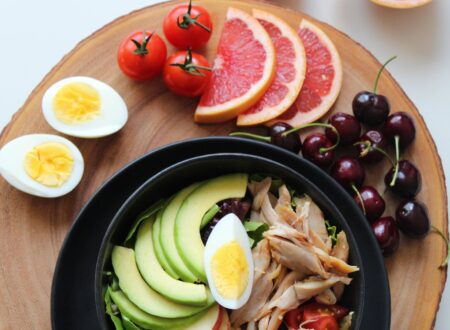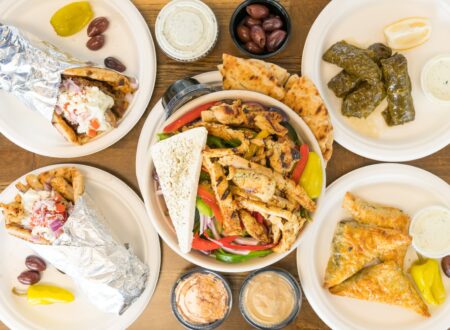In today’s fast-paced world, food often appears in our kitchens, grocery carts, or restaurant plates with little thought about its origins. Wrapped in plastic or served on a plate, it can be easy to forget that each item we eat has a story—a journey that begins far from our tables.
Understanding where your food comes from isn’t just about curiosity; it’s about making informed choices that impact your health, the environment, and the economy. In this blog, we’ll take a closer look at the journey food takes from the farm to your fork, and why being aware of this process matters more than ever.
The Agricultural Beginning: Where It All Starts
Every bite of food begins its journey on a farm, whether it’s a sprawling industrial field or a small-scale organic plot. Farmers around the world grow the crops and raise the animals that feed billions. But how they do it—and the scale at which they operate—varies dramatically.
Conventional vs. Sustainable Farming
- Conventional agriculture often relies on monocultures (growing one type of crop), synthetic fertilizers, pesticides, and large machinery. While efficient, this method can lead to soil degradation, pollution, and reduced biodiversity.
- Sustainable or organic farming, on the other hand, emphasizes crop rotation, composting, minimal chemical use, and animal welfare. Though sometimes more labor-intensive, these methods prioritize long-term environmental health and food quality.
Understanding these practices helps consumers support farming methods that align with their values—whether it’s reducing pesticide use, supporting local growers, or encouraging regenerative agriculture.
Harvesting and Processing: The Next Step
Once crops are grown and animals are raised, the next step is harvesting and processing. For produce, this means gathering fruits and vegetables when they’re ripe and transporting them to be cleaned, sorted, and sometimes packaged.
For meat and dairy, the process involves:
- Slaughtering and butchering animals in regulated facilities.
- Pasteurizing milk and transforming it into cheese, yogurt, or other products.
- Processing grains into flour or cereals.
During this stage, additives or preservatives may be introduced—especially in large-scale processing plants—raising concerns about nutritional quality and chemical exposure. This is where food labeling becomes vital, giving consumers insight into how their food has been handled.
Distribution and Transportation: A Global Network
After processing, food is distributed through a complex global supply chain. Trucks, ships, trains, and planes move food across cities, countries, and even continents. While this offers access to a wide variety of foods year-round, it comes at a cost.
Environmental Impact
- Food miles refer to the distance food travels from production to consumer. The greater the distance, the larger the carbon footprint.
- Refrigeration and packaging used during transport also contribute to energy consumption and waste.
By choosing local, in-season produce, consumers can help minimize environmental damage while supporting nearby farmers and businesses.
Retail and Marketing: The Food on the Shelf
Supermarkets, farmers’ markets, and specialty stores are the final stop before food hits your kitchen. But how food is marketed, priced, and displayed plays a big role in consumer behavior.
- Processed and packaged foods often receive prime shelf space, flashy branding, and heavy promotion.
- Whole, fresh foods, especially local produce, may be less prominent or more expensive due to smaller-scale supply.
Knowing how to read nutrition labels, understand certifications (like USDA Organic, Fair Trade, or Non-GMO Project Verified), and shop seasonally empowers you to make choices that align with your dietary and ethical preferences.
The Consumer’s Role: Making Conscious Choices
Once food is in your hands, the journey becomes personal. From storage to cooking, you’re in control—but you also have a role in shaping the food system.
What Can You Do?
- Buy local and seasonal: Farmers’ markets and community-supported agriculture (CSA) programs are great ways to access fresh, local food while supporting small growers.
- Support ethical brands: Look for companies that practice transparency, fair trade, and environmental responsibility.
- Reduce food waste: Plan meals, store food properly, and get creative with leftovers.
- Cook at home: Preparing meals gives you control over ingredients and fosters a deeper connection to what you eat.
- Grow your own food: Even a small herb garden or tomato plant can deepen your appreciation for the process.
The Importance of Transparency
There’s growing demand for food traceability—being able to track every step of a food’s journey. Advances in technology, like blockchain and QR codes, allow some consumers to scan products and see where and how they were made.
Transparency helps build trust, especially in an era of food recalls, contamination scandals, and greenwashing. As consumers, we deserve to know where our food comes from and how it got to us.
From Awareness to Action
Understanding the “farm to fork” journey transforms the way we view food. It’s not just about taste or convenience—it’s about health, sustainability, and respect for the people and ecosystems behind each bite.
When we’re informed, we can:
- Make healthier food choices
- Support ethical food systems
- Reduce our environmental impact
- Advocate for food justice and better labor conditions
Final Thoughts: A Journey Worth Knowing
Every time you eat, you’re participating in a global food system. By taking the time to understand where your food comes from, you’re not only nourishing your body—you’re shaping the future of agriculture, the environment, and society.
So next time you sit down for a meal, pause for a moment. Think about the hands that planted, harvested, transported, and prepared your food. The journey from farm to fork is a long one—but it’s a story worth knowing.





